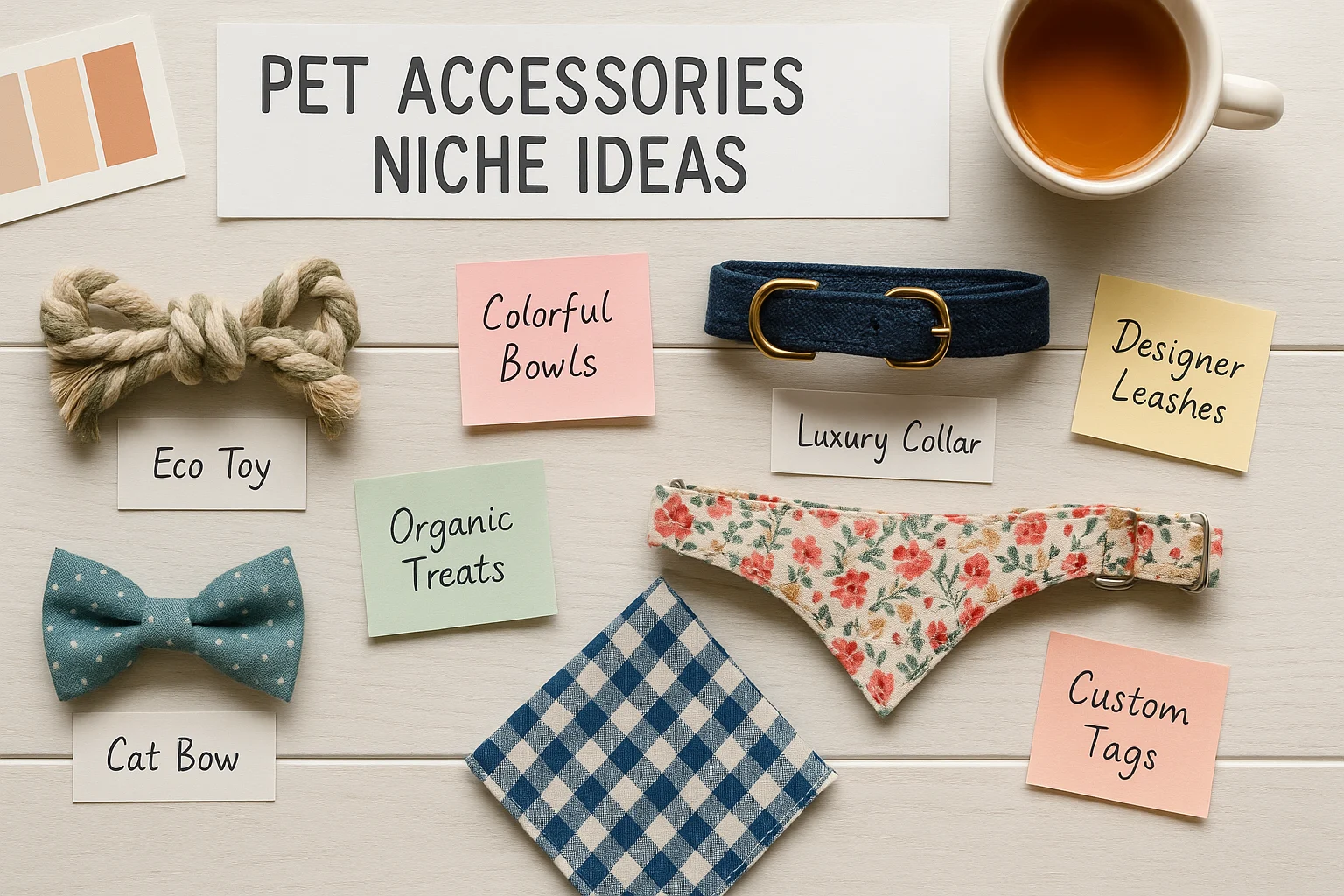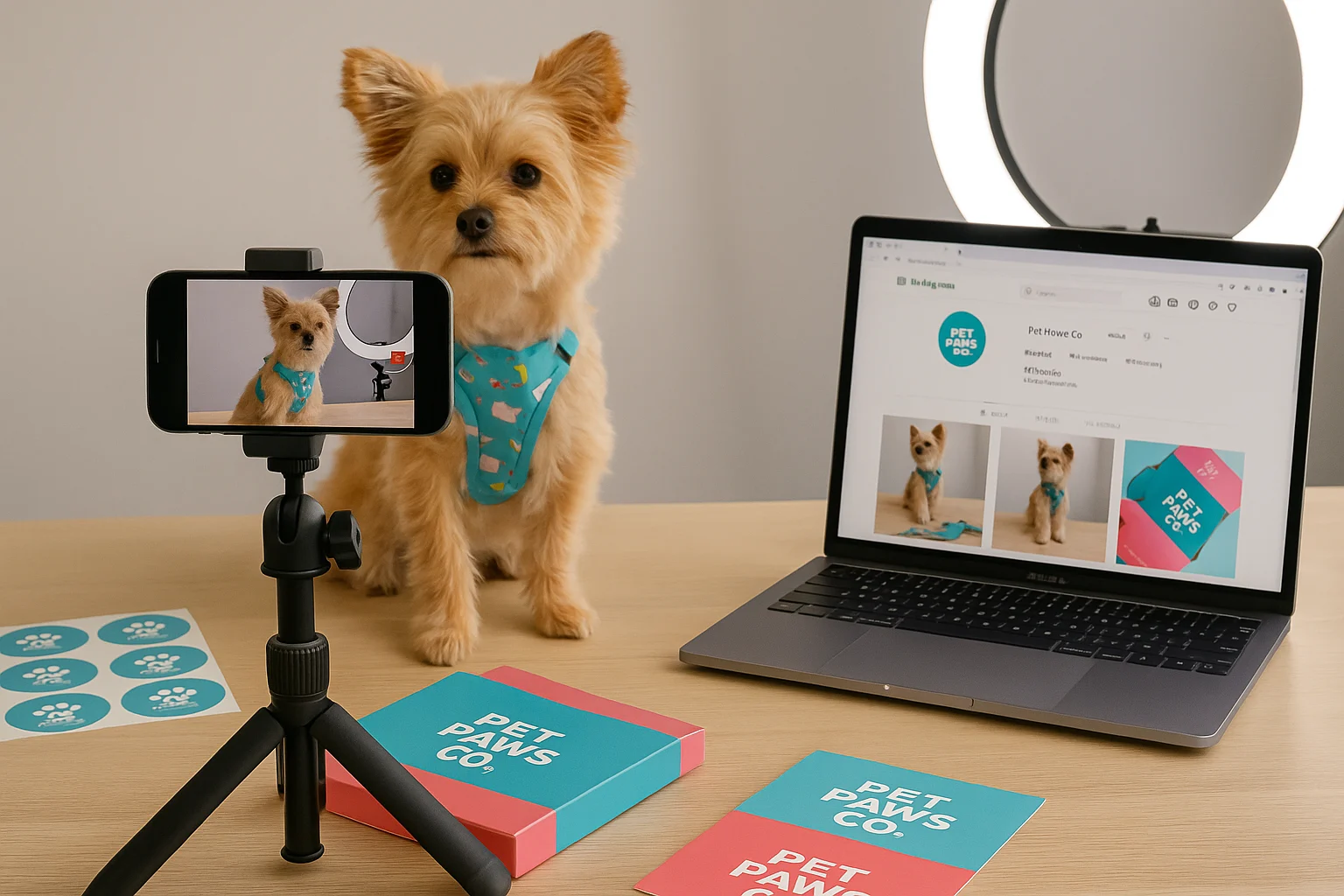
Want a simple plan to start a pet accessories business from home? With five core tools and a focused niche, you’ll go from idea to first sale—without guesswork. This guide shows you what to buy, how to price, and where to sell, including exactly how to start a pet accessories business the right way.
Kickstart Your Pet Business Today!Want more hands-on ideas? It’s one of many creative diy pet projects you can explore to blend your love for animals with crafting.
Table of Contents
- Key Takeaways for Your Pet Accessories Venture
- Why Start a Pet Accessories Business?
- Step 1: Discover Your Niche & Design Your Products
- Step 2: Gather the 5 Essential Tools
- Legal & Financial Basics for Your Pet Accessories Business
- Build Your Online Presence & Marketing
- Master Sales (From First Orders to Repeat Buyers)
- Bonus Tips for Long-Term Pet Business Success
- Pet Business Readiness Quiz 🐾
- Frequently Asked Questions
- Conclusion: Launch Your Pet Accessories Business Now
How to Start a Pet Accessories Business: Key Takeaways
- Find Your Niche: Pick a unique angle so your brand truly pops.
- Master Your Tools: Five tools—sewing machine, branding kit, shipping scale, e-commerce platform, mockup software—are key.
- Handle the Basics: Register your business and set up finances properly.
- Market Smart: Use photos, social media, and SEO to attract pet parents.
- Delight Customers: Offer top-notch service for loyal buyers.
This post contains affiliate links. If you buy through our links, we may earn a commission at no extra cost to you. Learn more.
Print Polished Labels at Home
Create clean brand labels, SKU stickers, and ship tags so your first orders look professional.
Why Start a Pet Accessories Business?
Crazy about your pup or kitty? Then you’re in for a treat! Turning your love for pets into a side hustle lets you make simple gear—collars, bandanas, or toys—using fabric scraps or materials you already own. Build pieces you’d use with your own pet. Demand for quality accessories is steady all year, and you can run everything from home.
Step 1: Discover Your Niche & Design Your Products
Find Your Niche (So Your Brand Stands Out)
Want to stand out? Pick a clear niche. Instead of generic collars, consider eco-friendly toys from recycled fabric or custom harnesses for dogs with special needs. You could go upscale with premium fabrics or focus on playful cat bandanas. A focused idea like “vintage-inspired cat bow ties” helps shoppers know what you’re about from day one.
Brainstorming Product Ideas
Picture what pet parents might love: sturdy nylon collars, playful bandanas, or cozy sweaters for chilly pups. How about durable tug toys or snuggly pet beds? Always choose pet-safe materials—think non-toxic dyes and sturdy bits that won’t end up in Fido’s tummy!
Pricing Your Pet Accessories
Quick pricing trick: total your materials, add your time (say, $15/hour) and overhead, then add a 20–50% margin. That’s your tag price. Example: $2 materials + $7.50 for 30 minutes of labor + $1 overhead = $10.50 cost. With a 30% margin, price at about $13.65.

Step 2: Gather the 5 Essential Tools
Sewing Machine for Pet Products
A Brother CS6000i sewing machine ($150–$200) is great for stitching fabric accessories. Its versatile stitches make it beginner-friendly. Not into sewing? Try a Cricut Maker for vinyl decals or knitting needles for non-sewn items. For other handy tools, see this DIY pet cord protector guide for budget-friendly crafting ideas.
Branding Kit Essentials
A strong brand sets you apart. Create a logo and pick 2–4 colors with Canva Pro (pricing varies; confirm at Canva). For instance, a luxury look might lean on gold; a playful brand might use bright pink.
Make Every Package Brand-Ready
Pair your new logo with crisp labels for packaging and care tags—consistent from day one.
Shipping Scale & Supplies
Use a compact digital scale (up to 10 lbs) to weigh orders accurately. A bubble mailer and a simple brand sticker give a finished look. Compare prices at popular suppliers to keep costs down.
E-commerce Platform
Choose Etsy or Shopify to sell online. Quick comparison: Etsy has a built-in audience and low upfront cost but heavier competition and less branding control. Shopify gives you a fully branded, scalable site, but it’s a paid plan and you’ll need to drive traffic.
| Platform | Pros | Cons |
|---|---|---|
| Etsy | Built-in audience, low fees, easy setup. | High competition, less branding control. |
| Shopify | Custom site, scalable, full branding. | Paid plan (commonly from ~$39/month); you’ll still need to drive traffic. |
Etsy is great for quick sales, while Shopify supports long-term growth. Note: promos (like short-term $1 trials) come and go—check Shopify for current offers.
Product Mockup Software
Tools like Placeit (plans vary; see Placeit) create professional visuals without photos. Upload your design to showcase it on a pet model.
Legal & Financial Basics for Your Pet Accessories Business
Registering Your Business
Choose a structure that fits: a Sole Proprietorship for simplicity, or an LLC to separate personal assets. Want a fun name like “Pawsome Creations”? Register a DBA. Check with your city clerk for local licenses, and get an EIN for free at IRS.gov. For an overview of structures, see the U.S. SBA guide.
Understanding Taxes
Keep a separate business bank account and track income/expenses. Etsy automatically calculates, collects, and remits U.S. sales tax as a marketplace facilitator in most states; verify your obligations for your location and any non-facilitated channels (Etsy Help).
Tip: This is general guidance. For registrations, taxes, and labeling, consult a qualified pro (e.g., small-business attorney or accountant) in your state or country.
Setting Up Finances
Create a budget for materials and marketing. Review pricing regularly to protect margins. A dedicated account keeps finances organized. For more budget-friendly tips, learn how to manage money wisely, even with a busy household.
Build Your Online Presence & Marketing
Build Your Online Store
Write detailed product descriptions (size, materials, care) and add an “About” page to share your story and set expectations. Keep language natural—avoid repeating the same phrase too often—and use buyer terms like “personalized dog bandana” where they fit.
Social Media Marketing
Share your creations on Instagram, TikTok, and Facebook groups. Short, authentic videos often reach a wider audience and can help visibility and sales—results vary. Post fit photos, behind-the-scenes clips, and sizing tips to build trust.
Email Marketing
Offer a signup discount to collect emails, then send quick updates and pet care tips using a starter plan from common email tools.
SEO Tips for Your Pet Business Startup
Use natural phrases buyers search (e.g., “eco-friendly cat collar”) in titles and descriptions. If you’re at the pet business startup stage, spell out sizing, materials, and care in plain language—those details help shoppers and search engines. Great photos and genuine reviews help rankings as much as keywords.

Master Sales (From First Orders to Repeat Buyers)
Making Your First Sales
Start with friends, local markets, or a small launch offer. Team up with a micro-influencer in your niche, or create a limited-time bundle to encourage early purchases.
Packaging & Shipping
Include clear sizing/fit notes and list materials (e.g., “100% cotton; non-toxic dyes”). Track every parcel and keep your returns policy simple to build trust.
Ship with Pro-Level Details
Print return labels, barcodes, and thank-you stickers to speed packing and encourage repeat buyers.
Exceptional Customer Service
Reply quickly, fix hiccups fast, and add a friendly note—small touches turn first-timers into fans.
Customer Retention
Send thank-you emails, offer loyalty discounts, and request reviews. Five-star feedback and repeatable designs keep production efficient.
Bonus Tips for Long-Term Success
- Affiliates: Recommend helpful tools to earn commissions (disclose clearly).
- Wholesale: Source fabrics from reputable marketplaces.
- Influencers: Gift products for exposure (set expectations).
- Expand Products: Add matching leashes or catnip blends.
- Learn & Adapt: Follow trends and feedback to refine your line.
Pet Business Readiness Quiz 🐾
✅ Quiz complete
Frequently Asked Questions
Conclusion: Launch Your Pet Accessories Business Now
Picture your pet wearing something you made. With five core tools, a clear niche, and simple marketing, you now know how to start a pet accessories business and sell from home with confidence.
Disclaimer: This guide shares general information only and isn’t legal, financial, or business advice. Consult a qualified professional (e.g., attorney, accountant) for your situation and location. When making pet products, use pet-safe materials, avoid small parts that could pose choking hazards, and supervise pets during use. Follow local safety, labeling, and insurance requirements before selling.